The Spectacular Geographical Wonders Of Europe
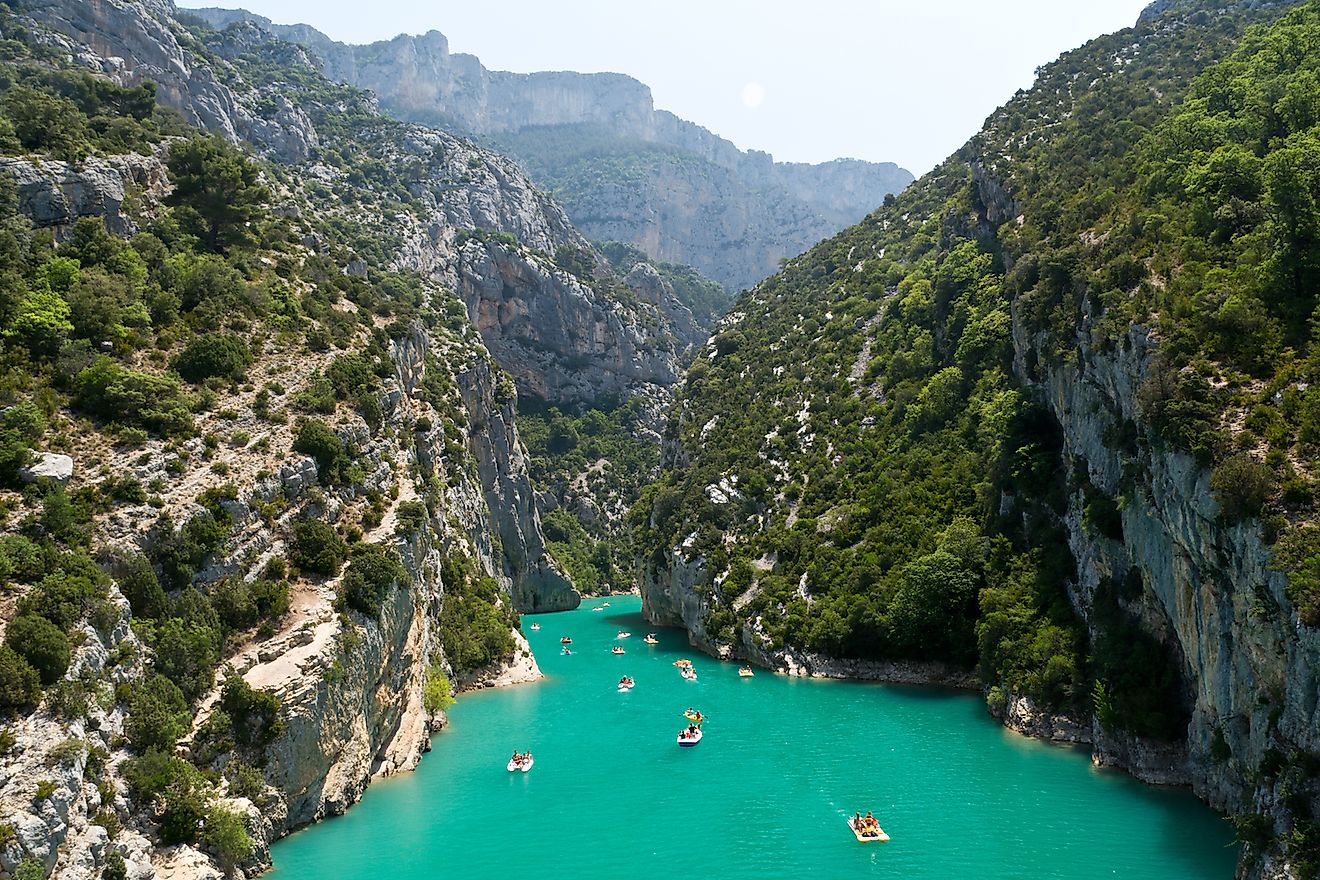
- On the coast of Northern Ireland are 40,000 basalt columns that form a path down to the water below called the Giant’s Causeway.
- The Blue Grotto is an angelic sea cave on the Italian island of Capri where the water inside glows an icy azure blue.
- Near the Polish town of Gryfino, 400 pine trees have grown with a 90-degree bend at their base, giving them all a peculiar “J” shape.
From the Colosseum in Rome to the Acropolis in Athens, humans have built some of the most remarkable wonders in the entire world. However, our planet is responsible for all its natural beauty, some of which dates back millions of years before the ancients ever picked up tools. Below is a list of ten of the most beautiful caves, canyons, and mountains in Europe. It may be one of the smallest continents in the world, but the following proves it has its fair share of geographical marvels.
10. Vatnajökull Glacier Ice Caves (Iceland)
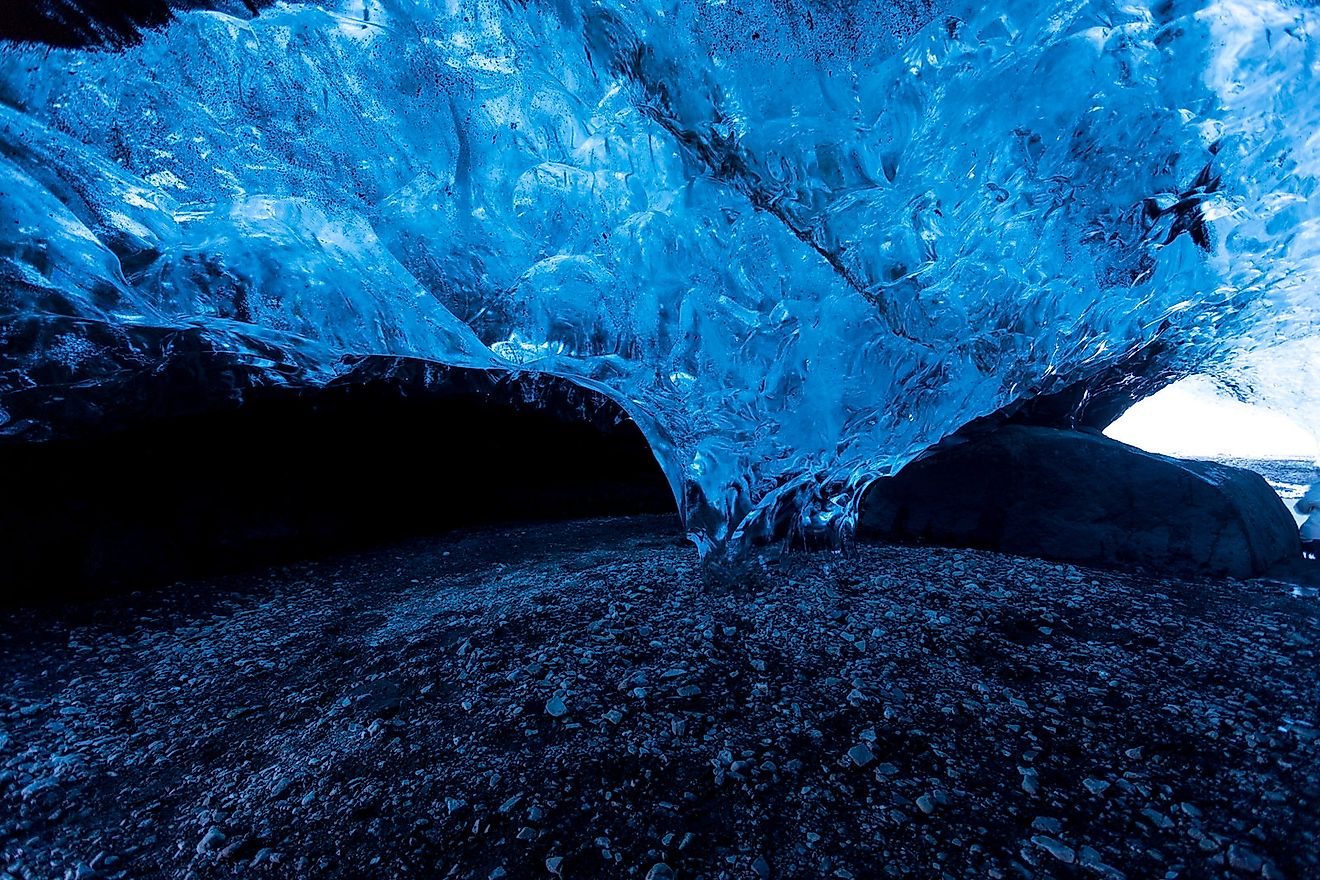
Vatnajökull is the largest ice cap in Europe, covering approximately eight percent of the island country of Iceland. Hidden beneath are some of the most awe-inspiring ice caves in the entire world. Surrounded by varying shades of dazzling blue, it is like stepping inside a shimmering diamond. The most popular cave is known as Crystal Cave due to the transparent quality of the ice. They are ever-changing, however, and reform every year after the melting period gives way to freezing temperatures. Because of this, they are inaccessible to the public in the summer. Even during winter months they should only be explored with a guide and the necessary safety equipment.
9. Giant’s Causeway (Northern Ireland)
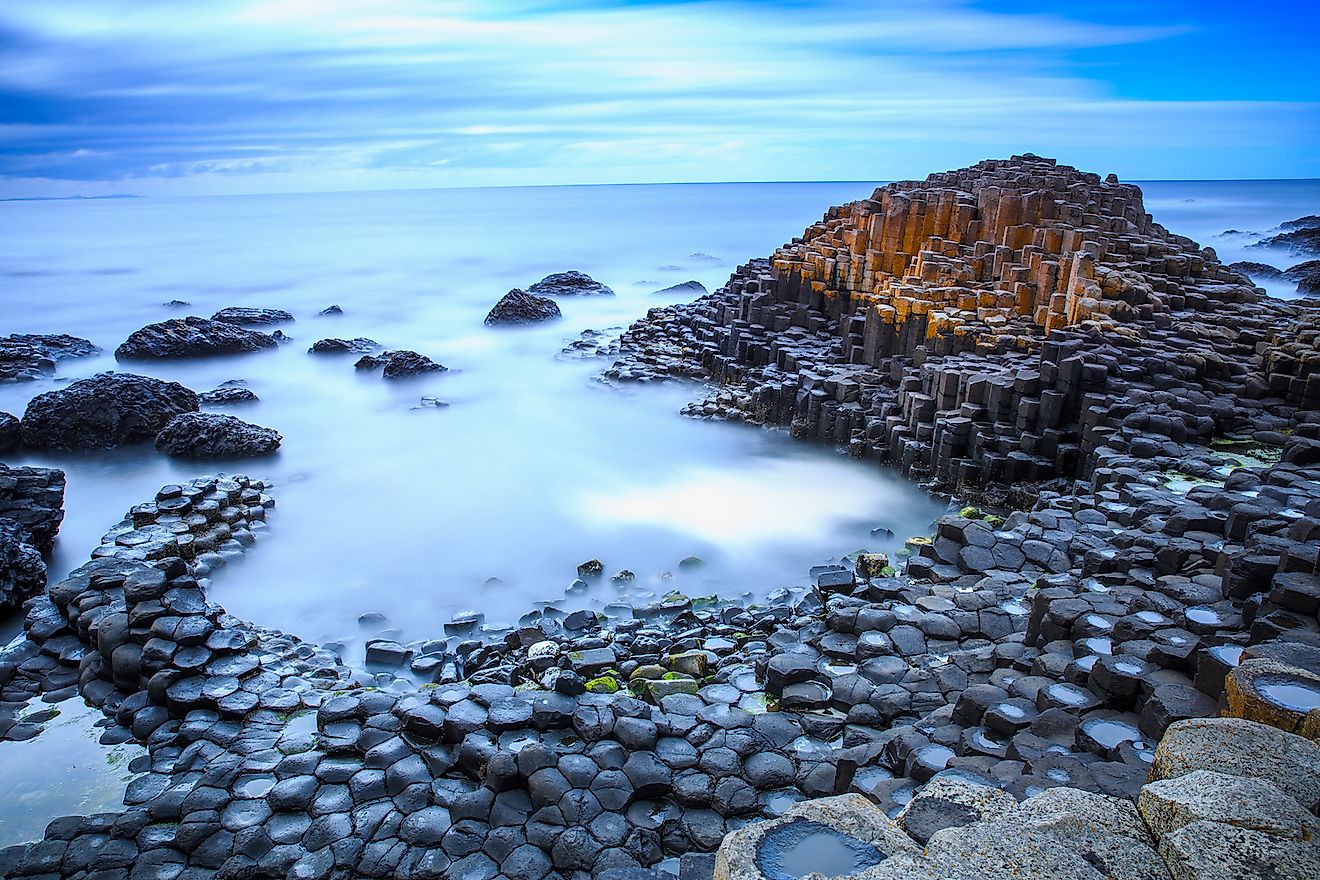
Formed approximately sixty million years ago due to volcanic activity, the Giant’s Causeway is located on the north coast of Northern Ireland. It is made up of roughly 40,000 basalt columns that form a path of stepping stones down to the water below. Most are hexagonal-shaped and measure up to twelve meters high. There are varying versions of the story, but legend claims that the causeway was built by giants, hence its curious name. Tourists exploring the area are likely to see some amazing seabirds, including the great cormorant, the European shag, and the razorbill. As one of the more popular natural attractions in Northern Ireland, it was declared a UNESCO World Heritage Site in 1986.
8. Fingal’s Cave (Scotland)
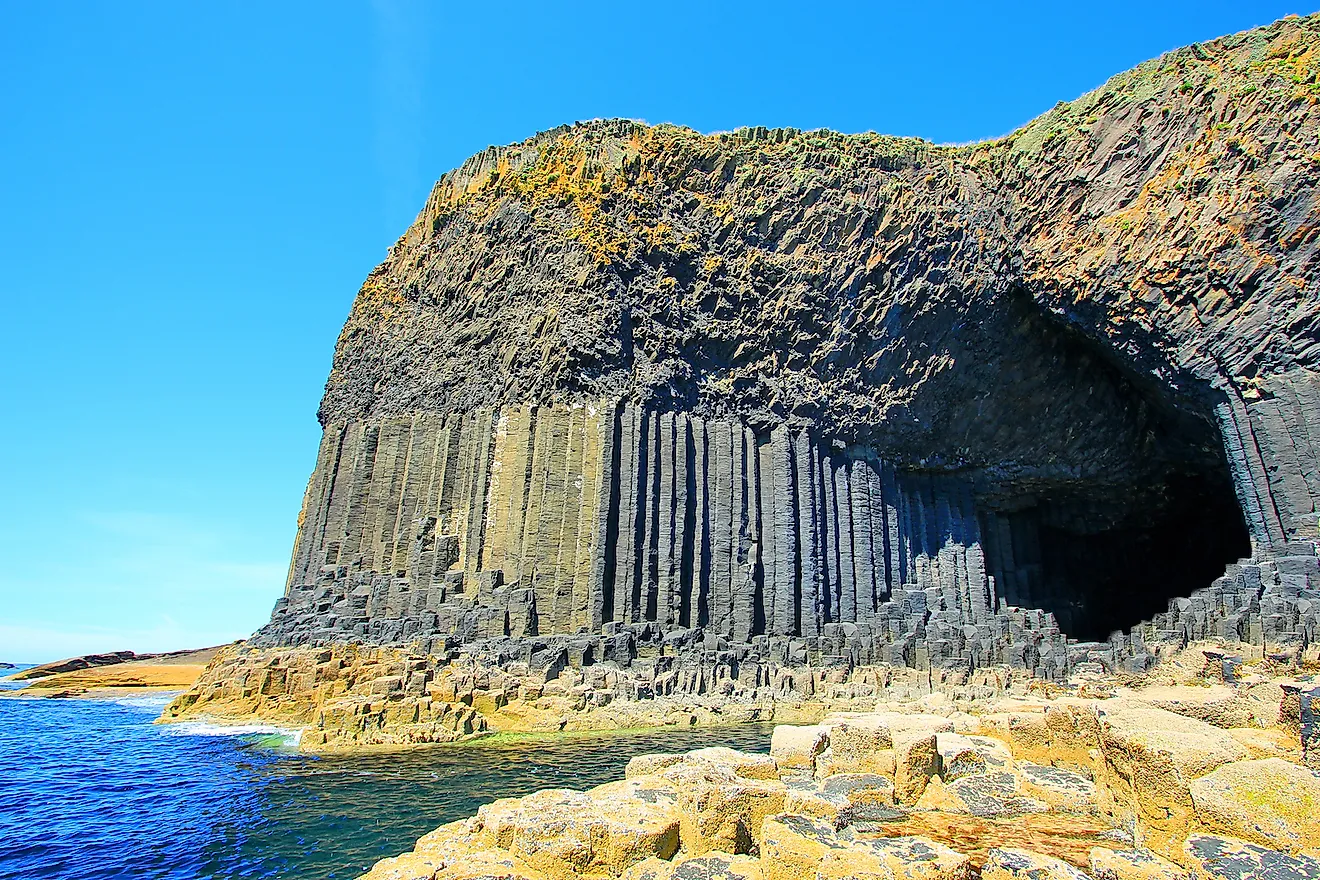
Located on the uninhabited island of Staffa, Fingal’s Cave is made up of massive basalt columns. These multiple-sided pillars form the outside of the sea cave and the interior walls which measure 22 meters tall and run 82 meters deep. In ancient times, locals believed that Fingal’s Cave and the Giant’s Causeway in Ireland were the end pieces of a bridge constructed by the giant Fionn mac Cumhaill. While this is purely myth, geologists assume that both sites were created by the same lava flow which may have formed a bridge millions of years ago. The sea cave was rediscovered by Sir Joseph Banks in 1772 and named after Fingal, an Ancient Epic Poem in Six Books by Scottish poet James Macpherson.
7. White Cliffs of Dover (England)
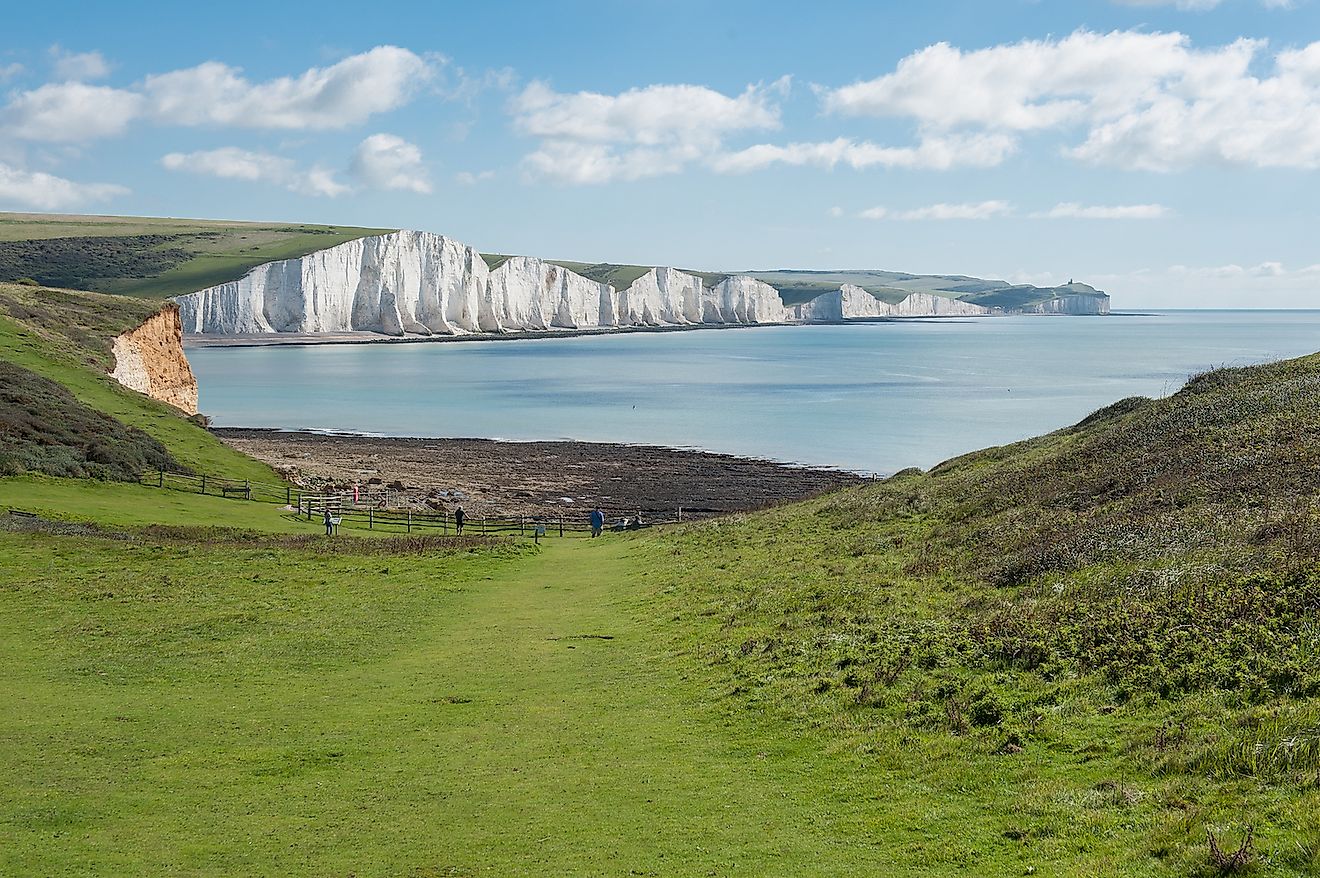
Overlooking the narrowest part of the English Channel, the White Cliffs of Dover stretch for miles along the southeast coast of England. These cliffs are a rare geological wonder as the white chalk is a pure form of limestone. Speckled with black flint and quartz, they glitter brilliantly under the summer sun. Tourists strolling along the grassy top or the beaches below might see any number of birds nesting against the cliff face, including the black-legged kittiwake. Approaching by boat, the British forces returning from Dunkirk during World War II were welcomed home by the cliffs’ chalky embrace. Because of erosion, they continue to shrink by one centimeter every year.
6. Les Gorges du Verdon (France)
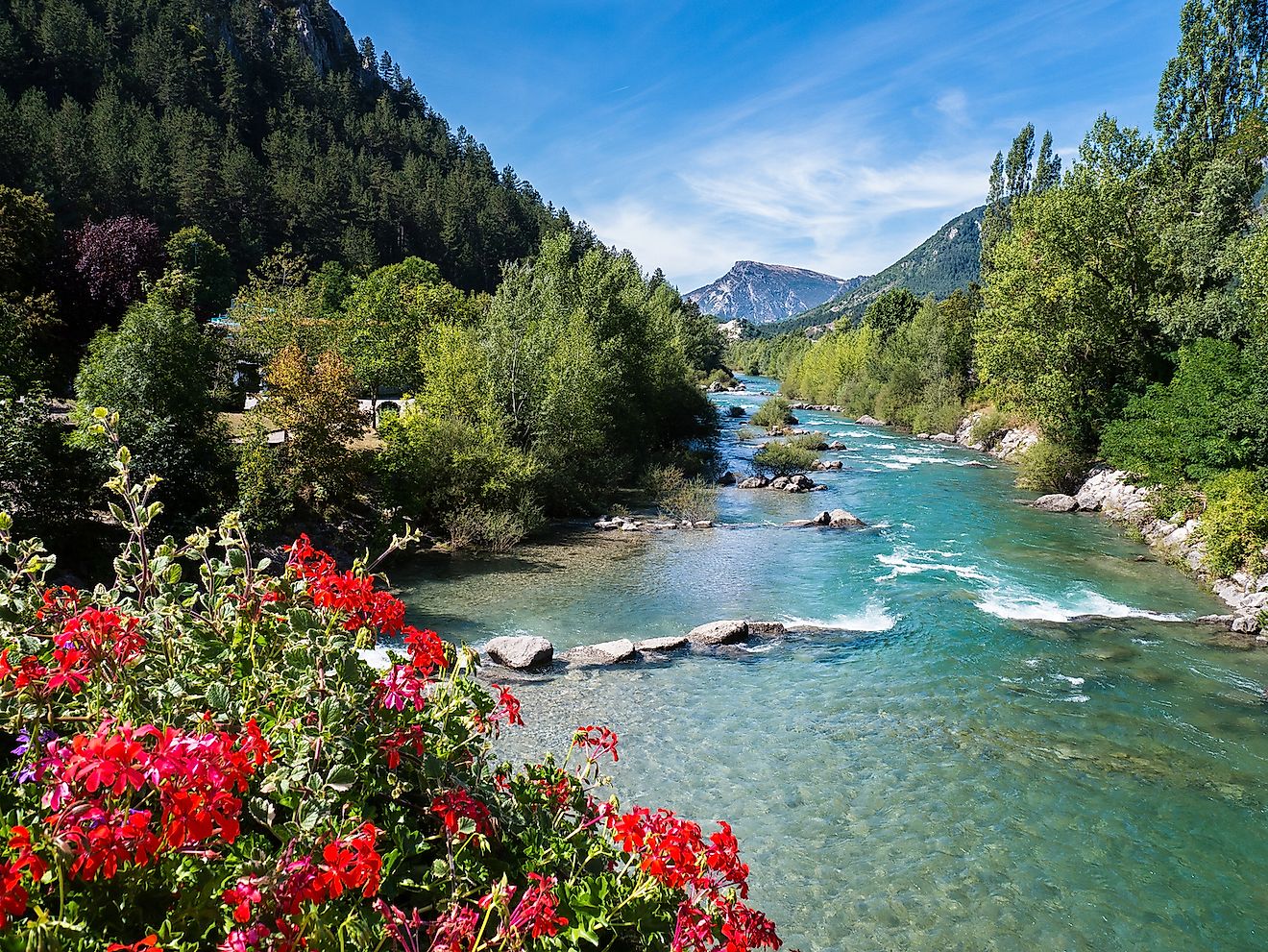
Stretching 15.5 miles long and measuring up to 700 meters deep, Les Gorges du Verdon is a river canyon located in the Provence region of southeastern France. It is one of the biggest canyons in the world, coming second to the Grand Canyon in Arizona. Formed approximately 250 million years ago, it is known today for its turquoise water which attracts thousands of kayakers every summer. The limestone walls are frequently dotted with rock climbers, while hikers and cyclists enjoy the paths along the edge of the gorge. It is also a must-visit for birdwatchers interested in birds of prey. Les Gorges du Verdon is generally considered to be Europe’s most picturesque river canyon.
5. Matterhorn (Switzerland and Italy)
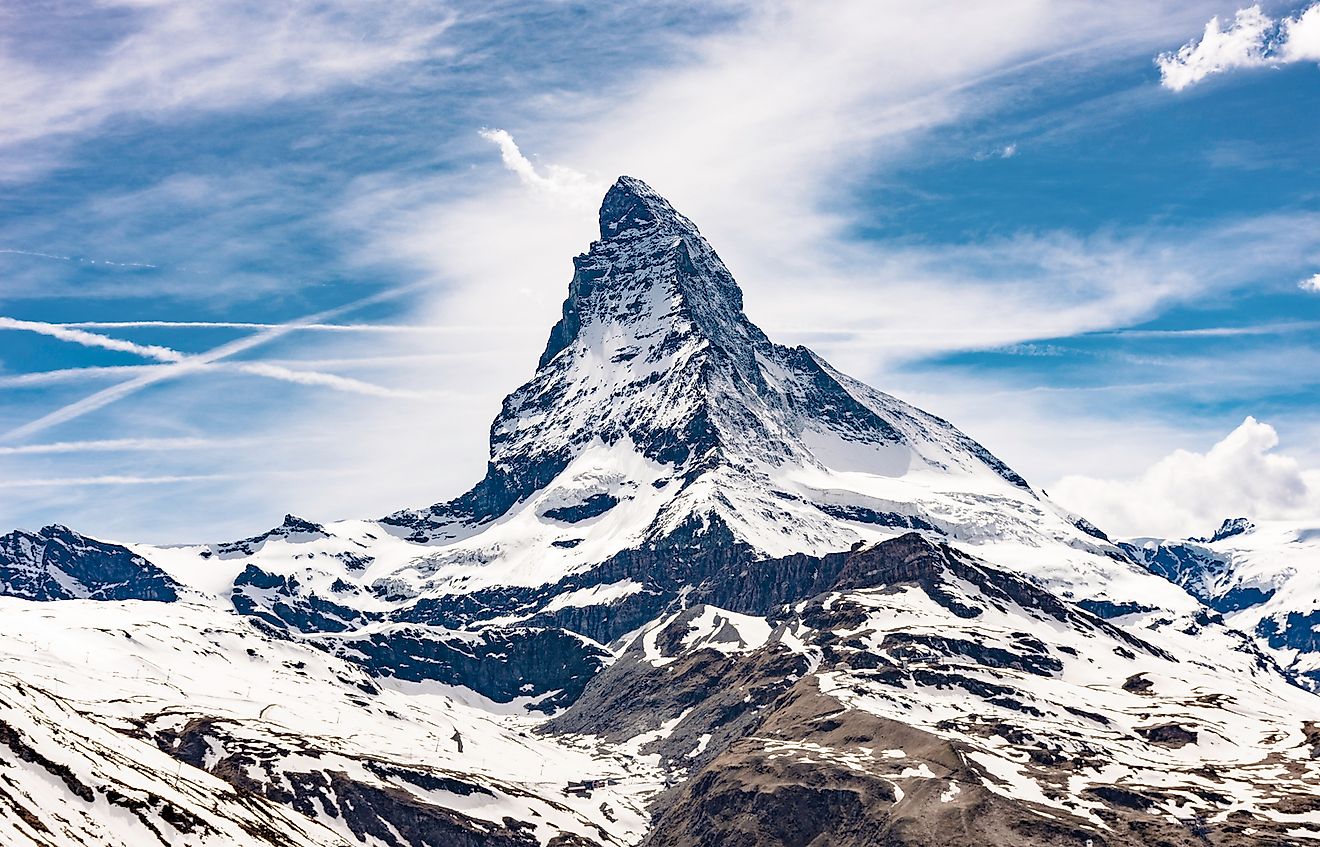
The Matterhorn is an iconic, pyramid-shaped mountain located in the Alps along the Swiss-Italian border. Colloquially known as the “mountain of mountains,” it is one of the tallest in Europe, measuring 4,478 meters high. While its peak is near-symmetrical, the highest part of the summit lies in Switzerland. Amazingly, each side aligns with the four main points of a compass: north, south, east, and west. Today, approximately 3,000 mountain climbers attempt to scale the Matterhorn every year. However, it is also considered to be one of the deadliest mountains in the world with roughly 500 deaths since the first ascent back in 1865.
4. Blue Grotto (Italy)
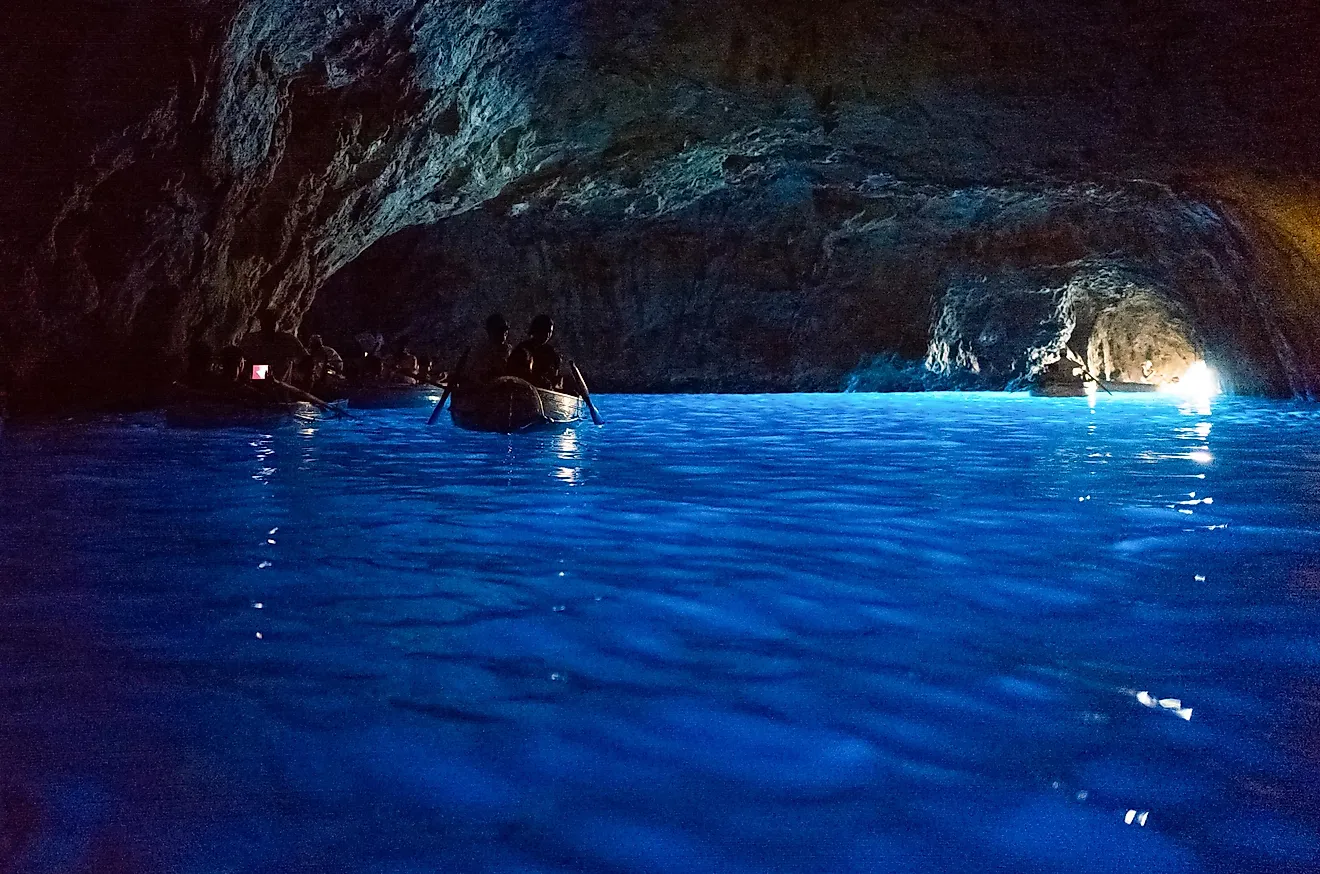
The Blue Grotto is a naturally-formed sea cave that can only be described as an angelic paradise. Located on the coast of the Italian island of Capri, the water inside glows an icy azure blue. This effect is caused by sunlight that is directed underwater through an open cavity and then shines back up to the surface. The sea cave is approximately fifty meters long and is roughly 150 meters deep. The mouth, however, is only two meters wide and can only fit small rowboats. During the Roman era, the Blue Grotto was Emperor Tiberius’s personal swimming pool, but today, tourists are not permitted to swim in the vibrant blue waters.
3. Eisriesenwelt (Austria)
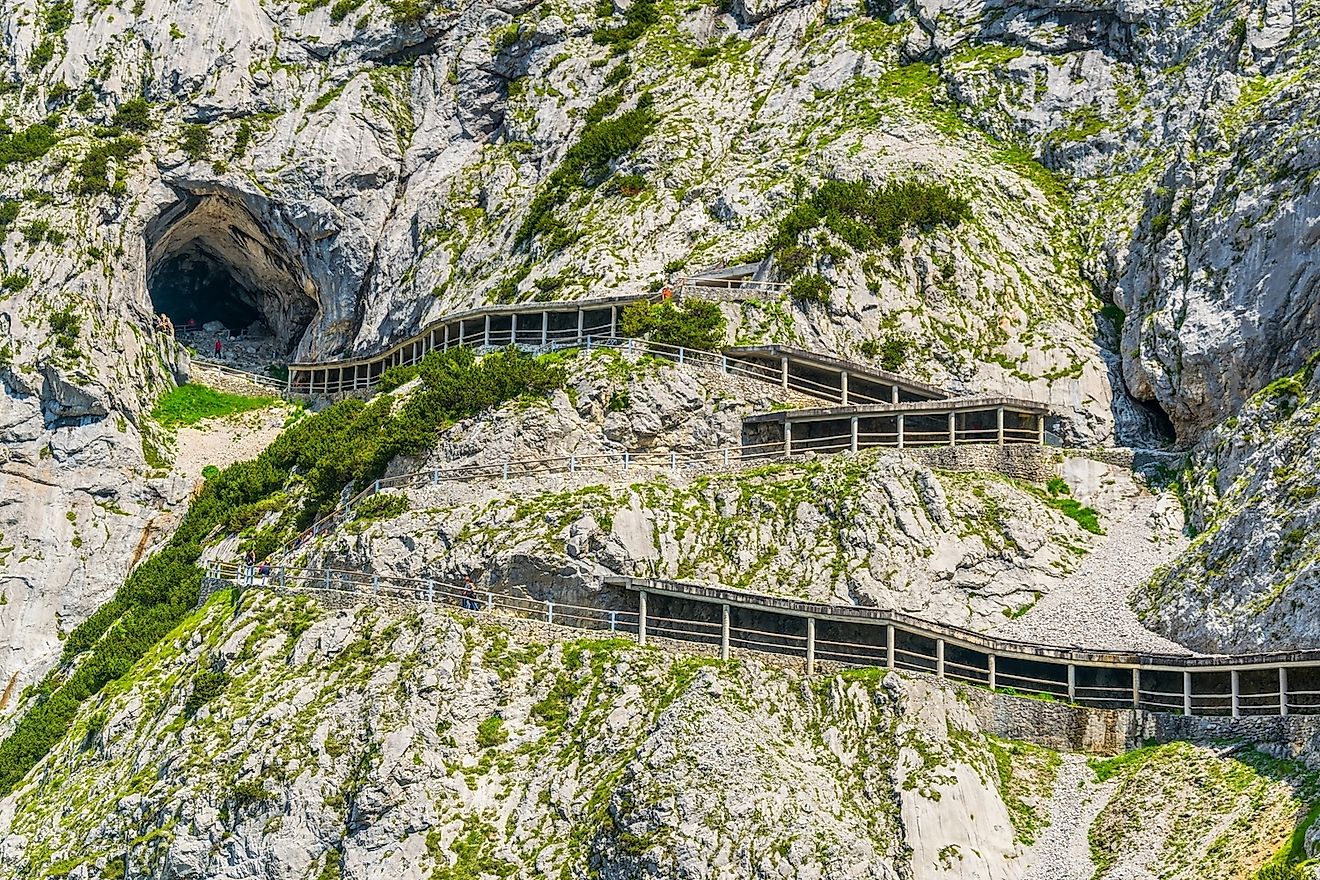
Eisriesenwelt is the world’s largest ice cave. Buried inside the Hochkogel mountain in the Austrian Alps, it was originally formed by the Salzach river which carved its way through the mountain. Roughly 200,000 tourists gather throughout the year to visit this crystalline labyrinth known as the “World of Ice Giants” in German. Inside, the temperature drops so low that guests are expected to wear appropriate winter clothing even during summer months. It was officially discovered by Anton Posselt in 1879 who only explored part of the cave’s full 26 miles of tunnel. Ironically, the ancient locals used to believe that Eisriesenwelt was an icy entrance to hell.
2. The Caves of Aggtelek Karst and Slovak Karst (Hungary and Slovakia)
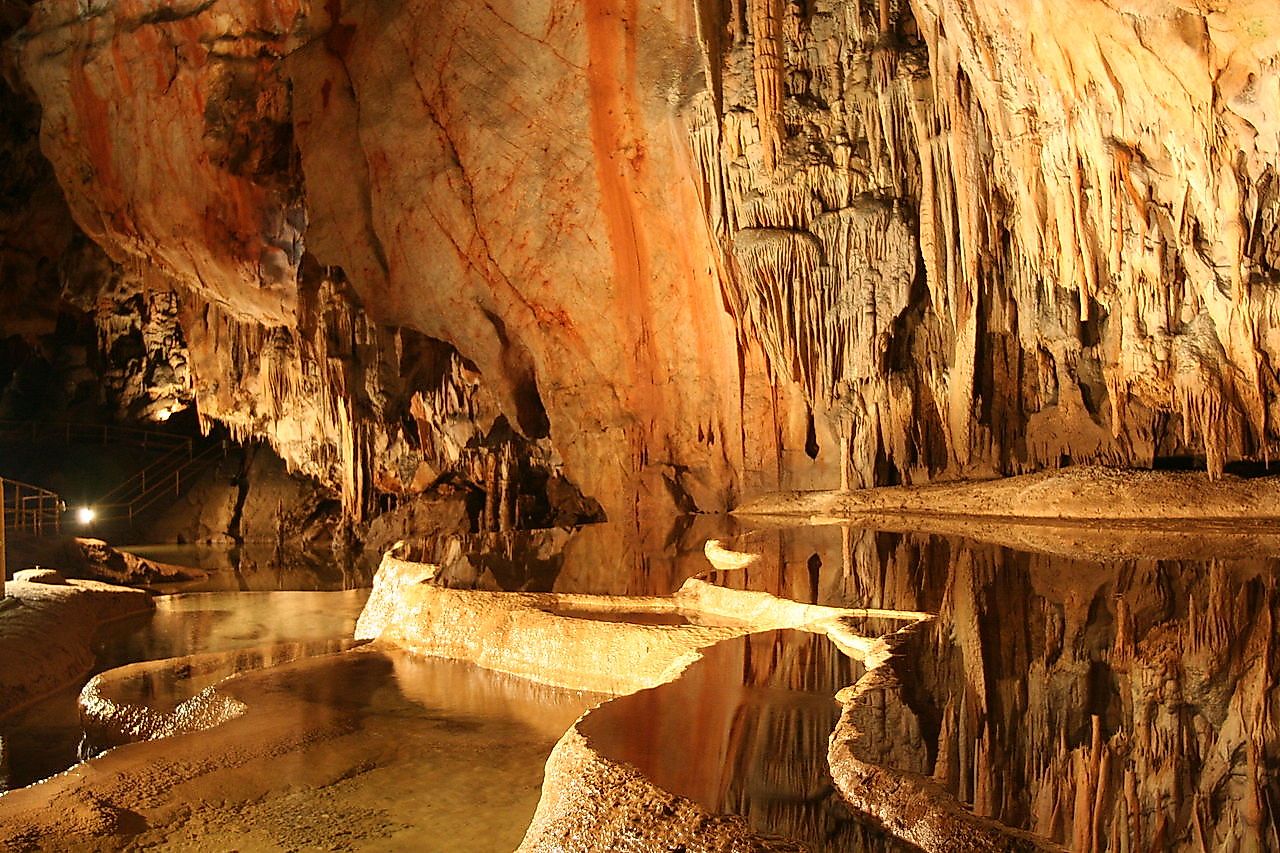
Formed over tens of millions of years, the Caves of Aggtelek Karst and Slovak Karst straddle the border between Hungary and Slovakia. 712 caves make up what is a vast and complex network spread out over 138,000 acres. They are somewhat eerie and fantastical in appearance from the thousands of stalagmites and stalactites dotting the topography. Approximately 99 percent of the caves are currently closed in order to preserve their natural conditions, which means only one percent are open to the public. These “show-caves” are visited by roughly 300,000 tourists a year. UNESCO declared this Eastern European marvel a World Heritage Site in 1995.
1. Crooked Forest (Poland)
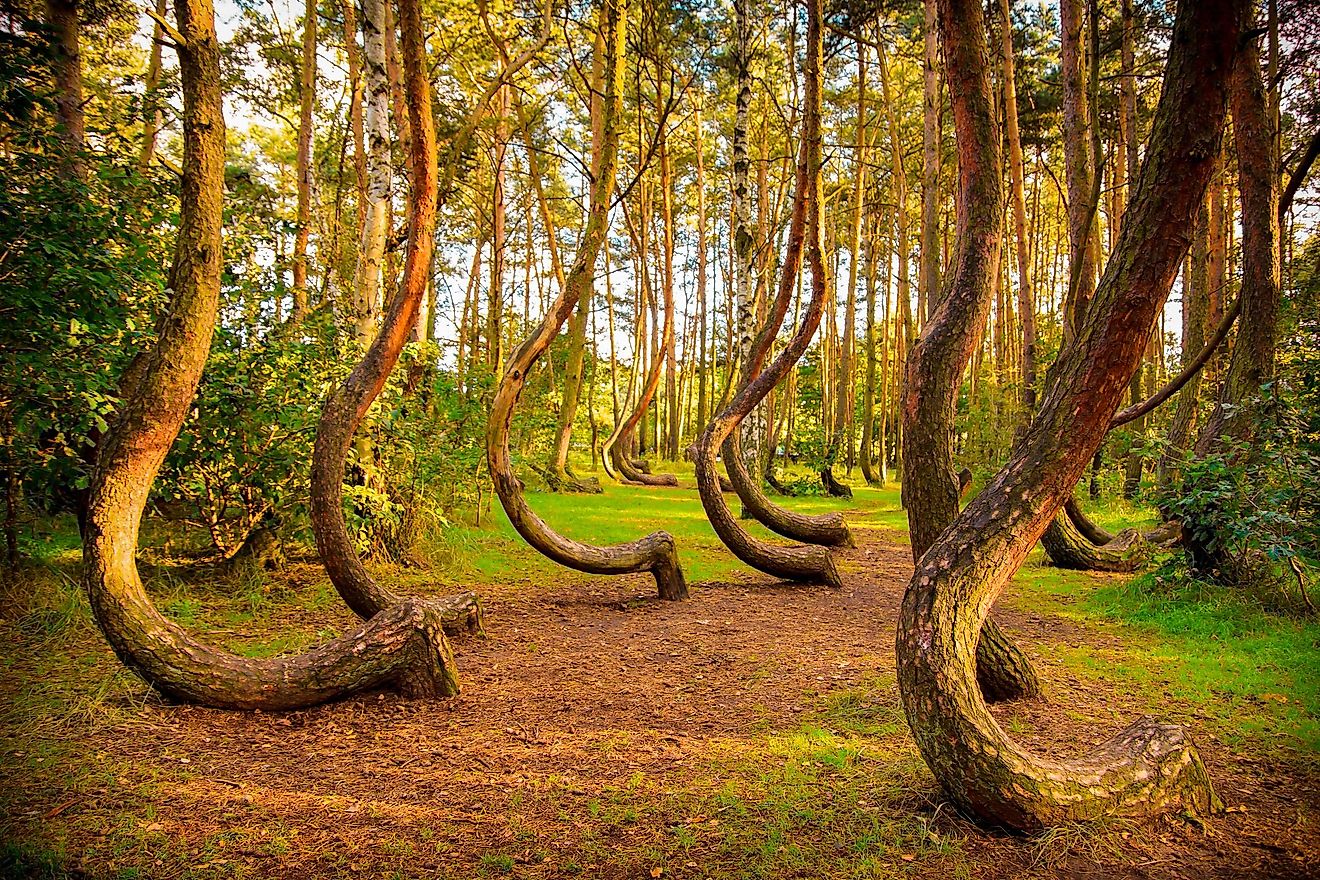
Near the Polish town of Gryfino lies the oddest of all the geographical wonders on this list: the Crooked Forest. For decades, scientists have puzzled over the 400 pine trees that have grown with a 90-degree bend at their base. Even more bizarre is that these J-shaped trees are surrounded by average forest. It is not exactly clear why this has occurred, but there are plenty of theories, including damage dealt during World War II from enemy tanks rolling through the area. Another suggests they were purposefully manipulated to use in construction. Regardless, it is assumed they were originally planted in the 1930s and were ten years old when their uniqueness first formed.











